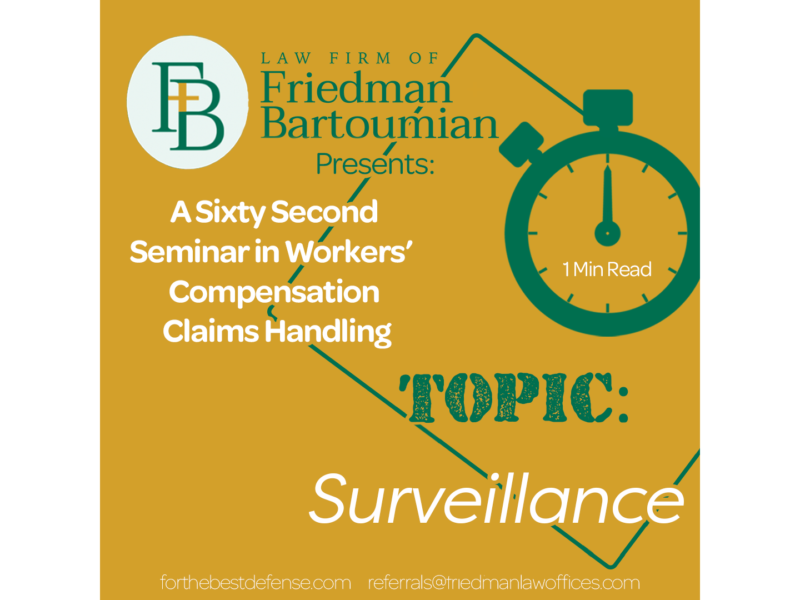Today’s blog is all about surveillance. Many employers and claims administrators tend to rely on surveillance as a last resort to disprove the existence of an industrial injury/disability, or perhaps to determine if a claimant is employed elsewhere while collecting compensation benefits. Before assigning an investigation, it is important for the claims administrator to develop a realistic goal as surveillance is not a magic pill that miraculously wins cases. For example: no amount of surveillance in the world will ever disprove an employee did not fracture a bone where an x-ray shows otherwise, nor will it disprove the existence of a permanent impairment following a significant back surgery. In addition to having a realistic goal, there are a few other rules that must be complied with whenever surveillance is scheduled. Let’s take a few moments to review some of these rules.
- No “roping” is allowed. Roping is the word used when someone is being set up to perform an activity they normally would avoid. For example, letting the air out of a tire so the injured worker may be filmed changing it, is an example of roping.
- Be specific on the number of hours of surveillance being authorized. When a claims professional authorizes “two-days surveillance” do they mean 48 hours or two 8-hour days?
- Be certain the subject of the surveillance is indeed the injured worker. Always provide the investigator with sufficient information to identify the injured worker. A close-up photo or other means of identification is highly recommended.
- Unless the surveillance is keyed to a specific day in the life of an injured worker (such as their birthday or the birthday of their child or spouse, or when the employer wants to capture images of a worker starting a new job or on a job site), surveillance should likely be performed on multiple days. One filming session is typically not enough to convince the Court that a worker is being untruthful because damaging images can typically be explained away by the worker as an aberration, under the premise that even injured people do sometimes have a “good day.”
- Lastly, be certain the investigator who filmed the applicant is available to testify at trial as to the circumstances by which the video was captured, and that the video was not altered. Otherwise, the films will be subject to characterized as unreliable hearsay and deemed inadmissible by the Court. In addition, the investigator and the video images should both be listed within the pre-trial disclosures made to the Court and opposing counsel within the MSC papers, which require the identification of witnesses and evidence.










 Workers’ Compensation Nurses: A Sixty-Second Seminar in Workers’ Compensation Claims Handling
Workers’ Compensation Nurses: A Sixty-Second Seminar in Workers’ Compensation Claims Handling
Leave a Reply